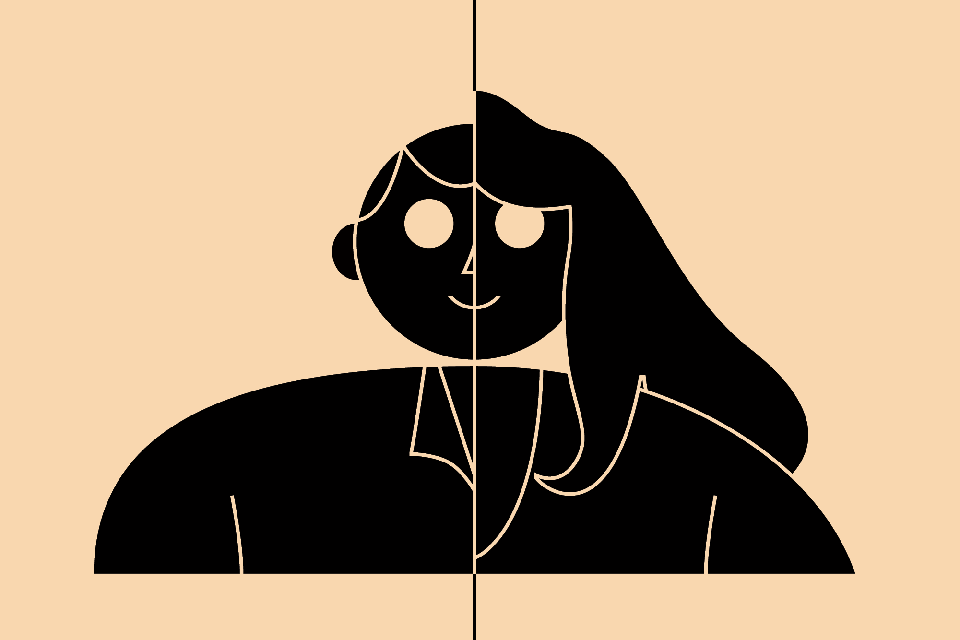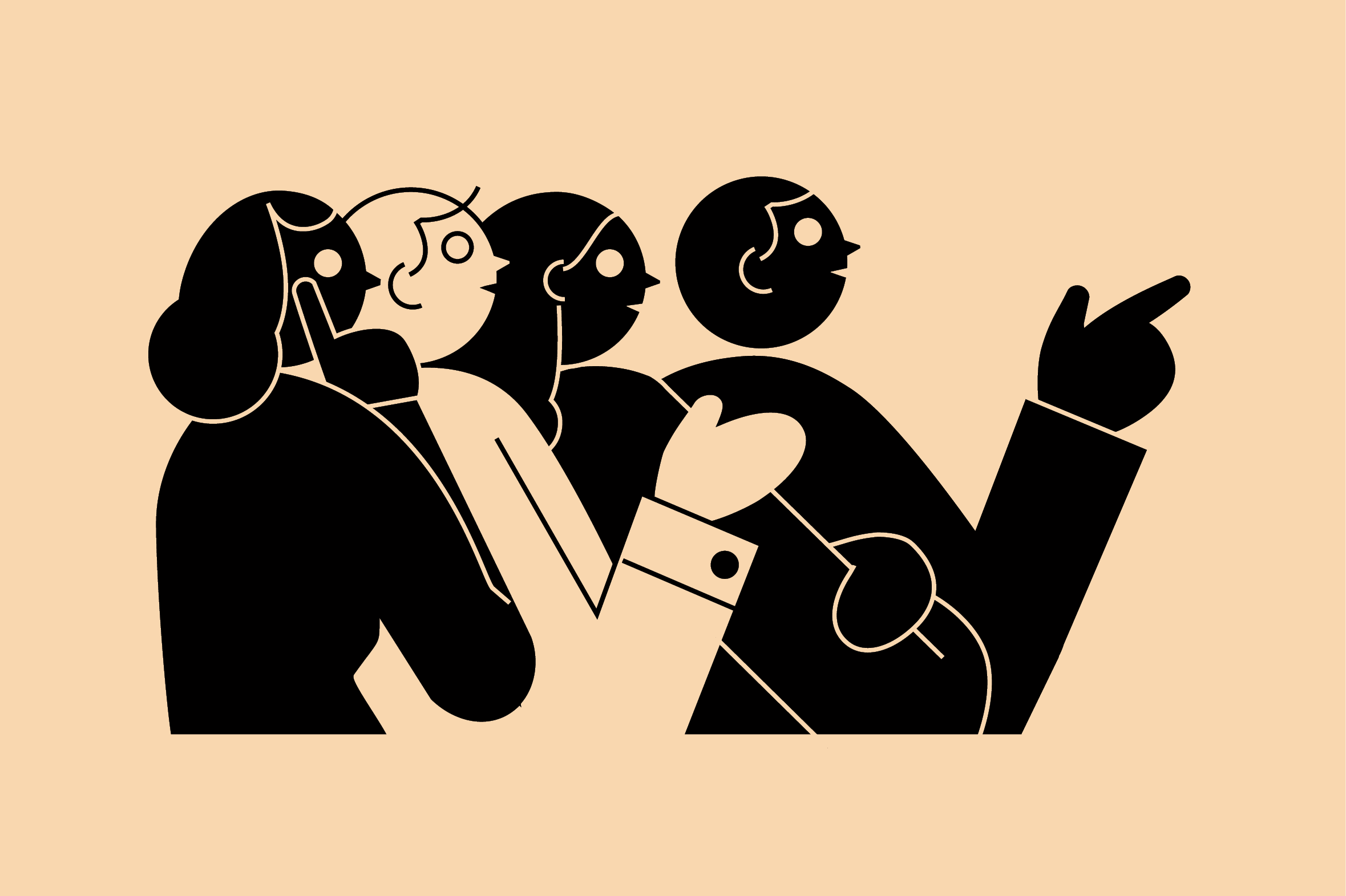The general discussion has largely focused on the lack of women in leadership roles, but that issue itself seems likely to be tied to imbalances elsewhere. A survey looking at gender in the advertising industry published by the Institute of Advertising Practitioners in Ireland (IAPI) reported in 2013 that women occupied 80% of all project management roles and 70% of account management, with men in 90% of digital roles and 67% of creative roles.
To get closer to the issue, we spoke to three people working at some of the leading design and branding agencies about the question of gender in these invaluable supporting roles, including where the imbalance might stem from and how it might be addressed.
Sarah Trounce
Account Director, dn&co
Sarah Trounce, who worked as a project manager at YCN and Jane Wentworth Associates before taking her current position as an account director dn&co just over a year ago, is clear that her career thus far has confirmed a female majority in project management. “It’s certainly been my experience that project and studio management roles are dominated by women,” she says.
“I think there’s still a preconception that women are better at looking after the details and supporting or handholding the team that gets things done,” she goes on. “But leadership, being good at both listening and talking, nurturing and growing people’s confidence, managing and challenging expectations, being proactive and always keeping an eye out for new opportunities – these qualities are totally present in both men and women.”
When asked if the gender trends in management were an important part of a much larger debate in the industry, Sarah was quick to answer: “I think part of the problem is that management and creative roles are differentiated as such. At dn&co (I have to say more than anywhere else I’ve worked) I feel that my role is administrative and creative in absolutely equal parts.”
The discrepancy between a majority of female design students and a minority of women working as designers is a particular cause for concern. “I worry that some women suffer from a belief that they cannot compete in such a male-dominated industry, and that management is the ‘safer’ option,” she explains. “Both areas of an agency are amazing and the trends need to be challenged. I would love to see more male account managers and more female designers.”
Pierre-Antoine Arlot
Senior Programme Manager, Wolff Olins
Hailing from France, Pierre-Antoine Arlot parlayed a business school education into a varied career in the design industry, and after graduating he found himself working for a new consultancy in China. “I learned a lot, moved into the brand and design world instead of pure marketing and I think that making this choice broke me out of the typical pattern of project management progression.” Now a senior programme manager at Wolff Olins, a job title he says was changed from account manager to acknowledge the full range of the role, Pierre-Antoine says he didn’t notice he was one of the few men in the role unless someone else made a point of it.
Most interestingly, he says in his experience producers, project managers and account directors the world over have tended to be mostly women. “That’s been true everywhere I’ve worked: in the US, Europe, Canada and China. This is a pattern that unfortunately transcends other cultural differences.
“I would really like to see more female creative directors and more male account directors,” he says. “There’s a trend of people hiring in their own image, so the fact that there are already more women in these roles probably means there is a little of this happening.”
Pierre-Antoine suggests the perception of these roles as somehow inherently feminine is misaligned with the reality. “In many respects I think creative roles could allow greater career flexibility for women. Project management is actually on the whole pretty intense; long hours, client and priority juggling, all at an incredibly fast pace, all of the time. Of course this is all part of the fun and the challenge, but it also means that it can be harder to step away and take an extended break from the work [to start a family] because everything is moving so quickly. Conversely, once someone has mastered design skills, those are yours for life.”
A key aspect of his point of view is the arrival of his first child, which he claims has not only given him a newfound respect for his wife, but for women everywhere challenged with balancing a career and a family in ways that don’t typically affect men in the same way. “I’m looking at the choices women have to make in their lives and to sustain their careers, and I’m imagining my daughter going through similar situations. Things need to change,” he says.
When asked how the balance could be readdressed, he looks to the HR departments, who he thinks should encourage long term thinking, and the government, whose social policies need to rethink childcare, job-sharing and remote working possibilities. “I also read a great blog about increasing inclusivity recently that showed how small, insightful language changes to a job advert seeking a senior interactive designer saw applications from women increase from 15% to 44%, so there are some smaller things that can be done right away.”
Sairah Ashman
Global Chief Operating Officer, Wolff Olins
“I started at the bottom as a project manager,” says Sairah Ashman, global COO at creative consultancy Wolff Olins, who sees her experience in management as crucial to her success. “I did the spade work in account management, learning from some of the best leaders in the industry over many years – Wally Olins, Brian Boylan, Doug Hamilton, Marina Willer. I think there’s a lot to be said for spending time getting the basics nailed so you have a strong platform to accelerate from.”
That particular roles tend to be slanted toward one sex or the other is something she feels everyone in the industry has noticed at one time or another. “Account management has been quite female historically, while strategy, design and finance has been skewed more towards the guys. There’s no reason for this to be the case as gender is irrelevant to how well a person performs in any of these roles.”
When asked why this seems to be quite an established issue, and one that has so far continues to repeat itself, Sairah offers up an interesting answer. “Familiarity and ease of entry,” she says. “People tend to recruit in their own image, so it stands to reason that any role dominated by one gender will continue along the same trajectory without some kind of intervention.”
She also echoes the fundamental reasoning others have cited for the gendering of these roles. “The historical narrative has been that women are natural organisers, managers and peacemakers,” she explains.
“It’s an extension of the homemaking role, juggling lots of commitments, keeping everyone happy and everything on track. It’s rubbish of course, social conditioning has a lot to answer for and patriarchal structures and attitudes take a long time to dissolve. I guess the underlying question being asked here is whether women pursue a role in production or management because they can’t easily move into a creative one.”
But Sairah, who is also part of the Omniwomen initiative, easily turns that very patriarchy on its head in her observation that organisational positions such as account management involve inherent leadership skills. “The narrative you don’t hear so much is how women are natural leaders and being so is an inherent part of delivering these roles: the ability to see the big picture, act beyond your own interests, build positive relationships and get to an outcome.”
Add to that Sairah’s opinion that the industry will catch up with itself as the current crop of men at the top, who will have started out ten plus years ago, make way for the next generation, and the many women in project and account management could be slowly but surely levelling the playing field as they work their way up. “My instinct is that there’s a generational time lag and that the current group of women in senior positions will inspire others to do the same.”

